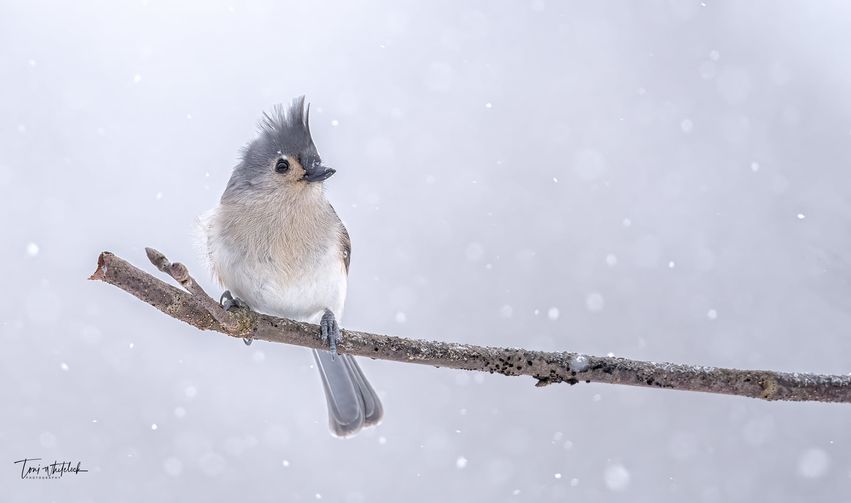
Photo Courtesy of Toni Whitelock
One of my favorite moments of winter is when I am outside, greeted by the song of a Tufted Titmouse.
“Peter, peter, peter” is the description that is typically used to describe their clear song, which is quite loud for the size of the bird. Their alarm and communication call sounds like a buzzy version of their cousin, the Black-capped Chickadee. Travelling in pairs, they can commonly be found in the eastern United States, favoring deciduous and mixed woods, gardens and parks. In winter, they are part of mixed foraging flocks consisting of Chickadees, Downy Woodpeckers, Nuthatches and perhaps Kinglets and Carolina Wrens.
Tufted Titmice are overall gray on their upperparts and white on their breast and belly, with a black forehead and black eyes that give them an endearing facial expression. Their flanks are a prominent rusty-orange, more bright in the males than the females.
When watching Titmice forage for food, note how acrobatic they are at the end of branches. They will easily turn upside down to investigate a curled leaf for over-wintering insects. Oak trees are a favorite, possibly because they hold their leaves through the winter and therefore, offer a food source not found on other trees.
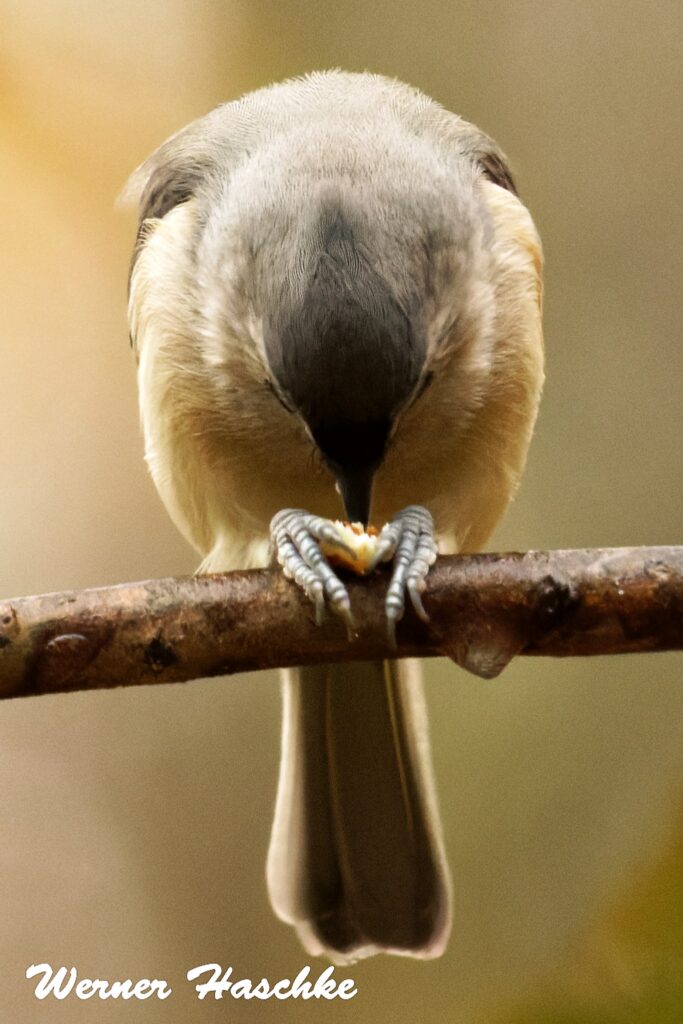
Photo Courtesy of Werner Haschke
We are fortunate that these perky little birds often visit our bird feeders, adding an element of joy to our watching. Waiting at the edge of trees or shrubbery, they investigate their potential choices. Watch for their quick, bouncy flight on the way to their chosen food, usually a sunflower or peanut. They grab the seed in their beak and carry it back to the branch. Holding the seed between their feet, they excavate the shell to get to the seed meat inside. Offering hulled seed saves this work and allows them to get to the work of chiseling the food into bite sized morsels.
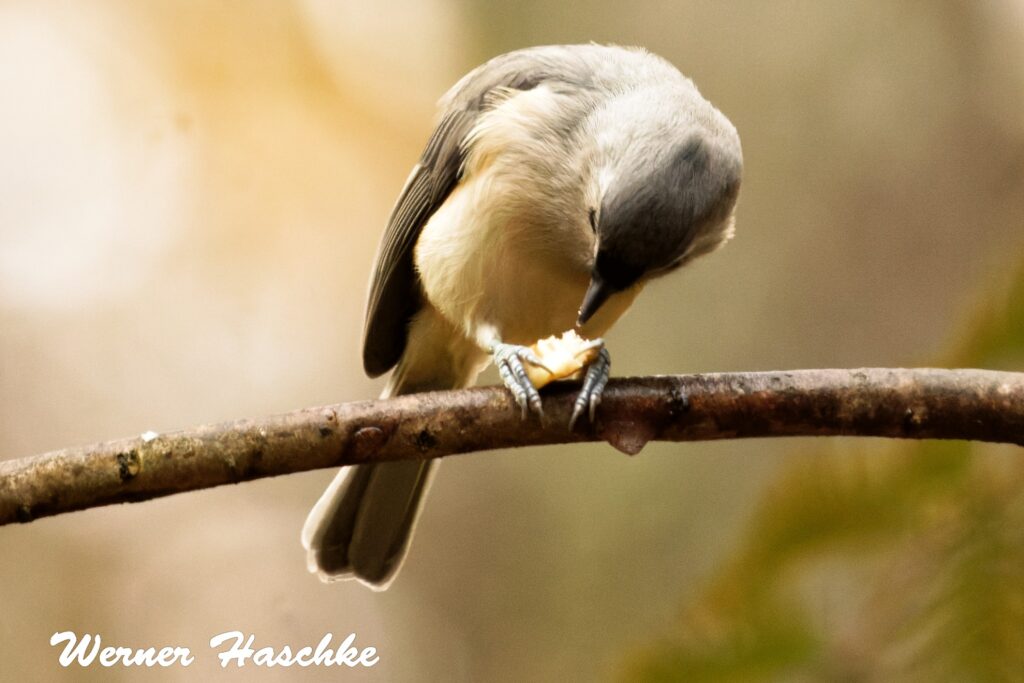
Photo Courtesy of Werner Haschke
Unlike many other perching birds, Titmice will forage in leaf litter, searching for protein-rich insects. I have some fond memories of seeing them at The Ford House foraging in this way, their perky crests giving away their identity above the leaf litter. Hint – leave your leaves as they harbor an important food source for these birds as well as others.
Titmice are capable of using muscles to raise and lower the crest, most likely as a result of their attitude at the moment. When the bird is singing the crest is flat, and when excited, the crest can be raised in a very pronounced manner. Watch for crest attitude as you observe them in your yard or out in the field.
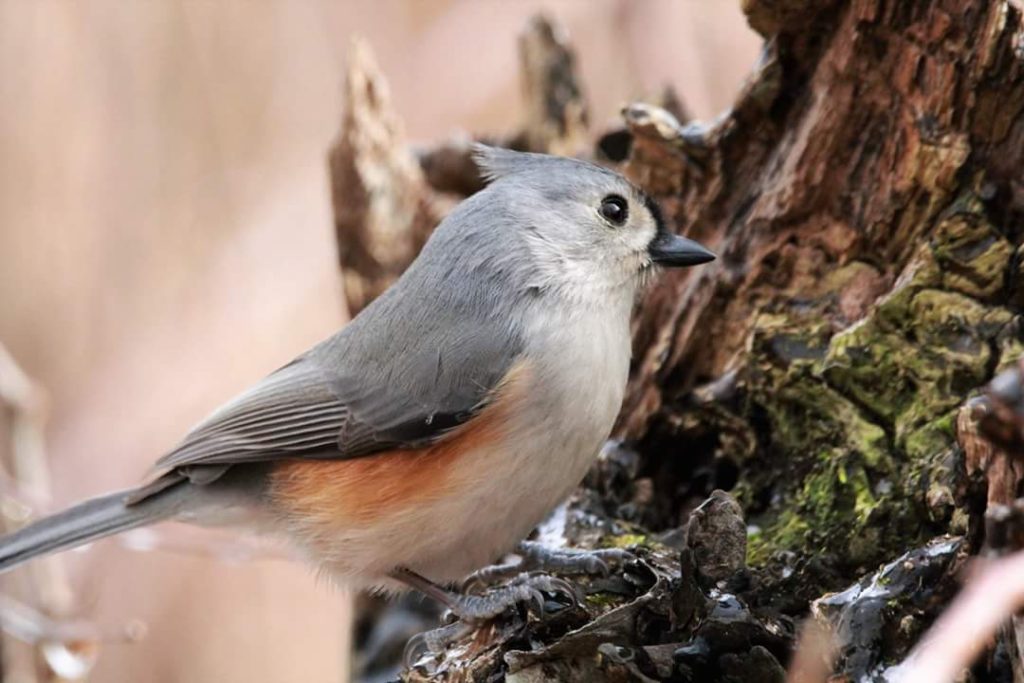
Photo Courtesy: Bill Creteau
Tufted Titmice are known to cache food, explaining their frequent visits to feeders in the fall. During times of extreme weather conditions, the food that they hoarded is recovered from cracks in bark and tree cavities, an excellent reason to leave standing dead trees or at the very least, leaving notable cavities. Hoarding takes place within 130 feet of the feeding station the Titmouse is visiting and most seeds are shelled before they are stored.
Cavities also play an important role in the breeding cycle of Tufted Titmice. Using natural cavities or those created by woodpeckers as well as nest boxes that we provide, Titmice will then create a cup-shaped nest on the bottom of the cavity. These nests are constructed of leaves, grasses and moss as well as bark strips. Knowing this, perhaps spring clean up in your yard can be less intense, with purposeful materials left for these birds to use.
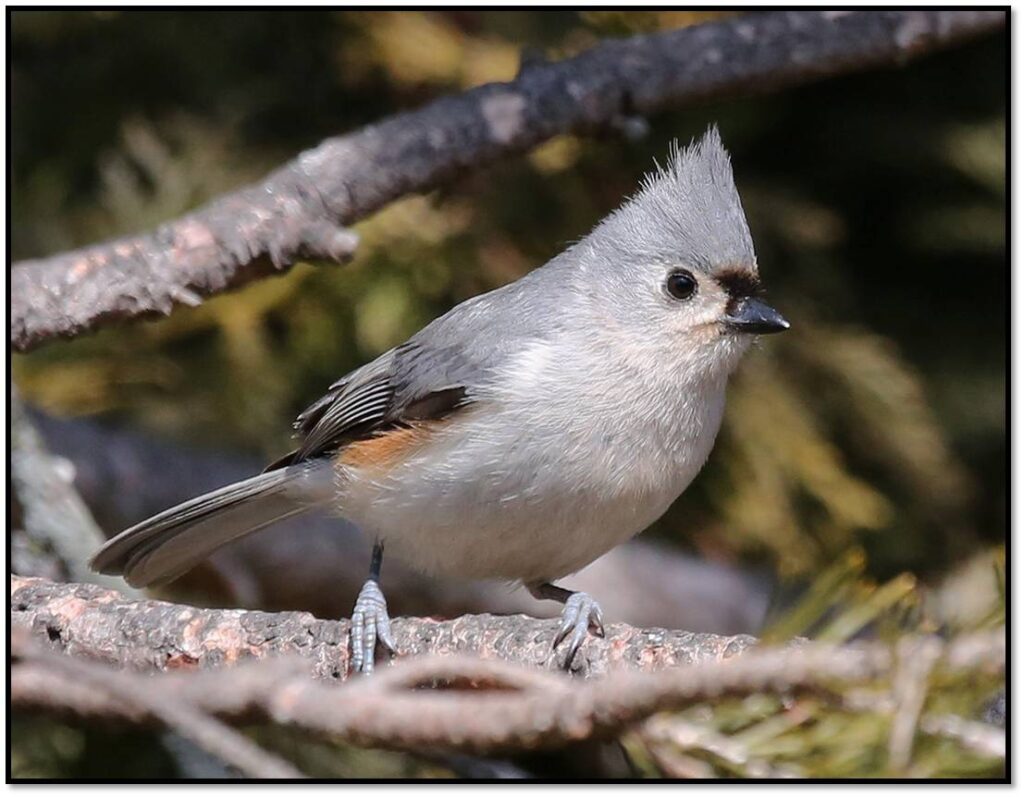
Photo Courtesy of John Graffius
Another very interesting addition to their nest is mammal hair, the last layer that is closest to the eggs. Nests have been documented to include the hair of squirrels, rabbits, raccoons, opossum’s, mice, woodchuck, horses and cows and even human hair. Offering hair in a suet cage used specifically for this purpose would be an interesting addition to the joy of watching these birds in your yard. The construction of the nest takes from 6 to eleven days.
Only one brood of young is created in a year, with three to nine eggs being laid. Incubation of the eggs takes two weeks and the young are fed by the parents for another two weeks before they fledge.
Tufted Titmice can be found in the eastern half of the United States, with all of the lower peninsula of Michigan being fortunate enough to host this charming year-round resident.
Enjoy your birds!
-Rosann Kovalcik
Owner, Wild Birds Unlimited, Grosse Pointe Woods
Have you joined our email list? Click here to sign up, it’s free and gives you access to sales, coupons, nature news, events, and more!
